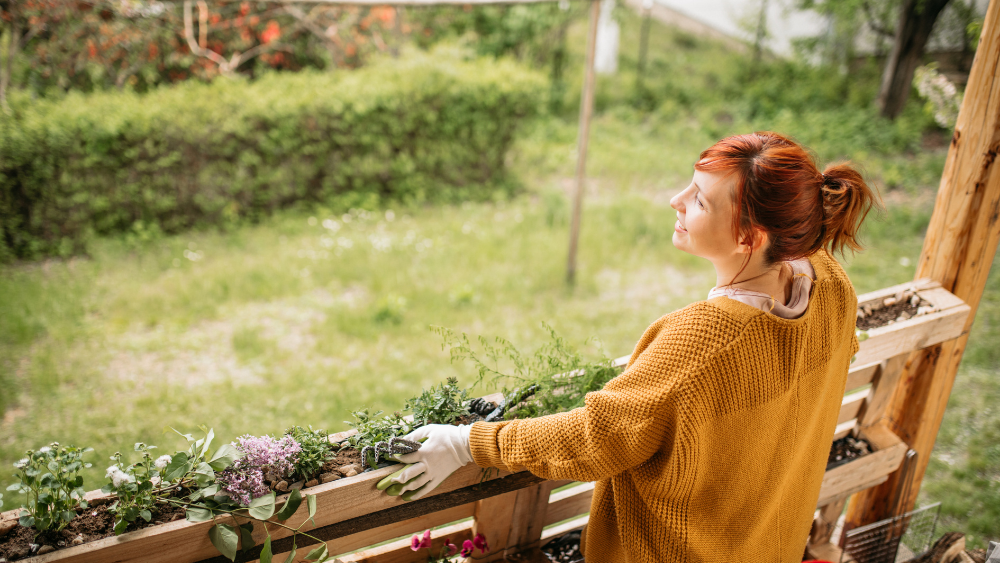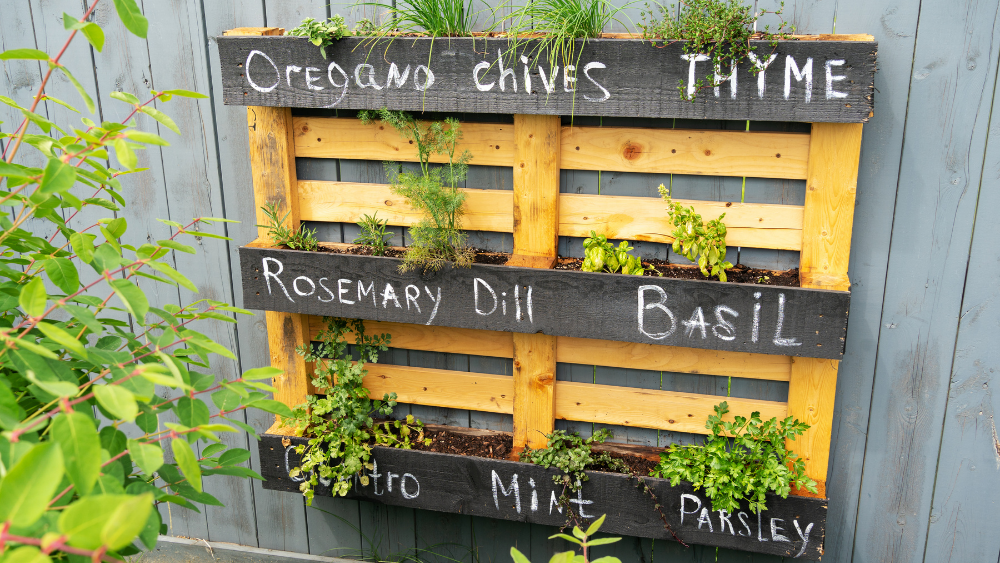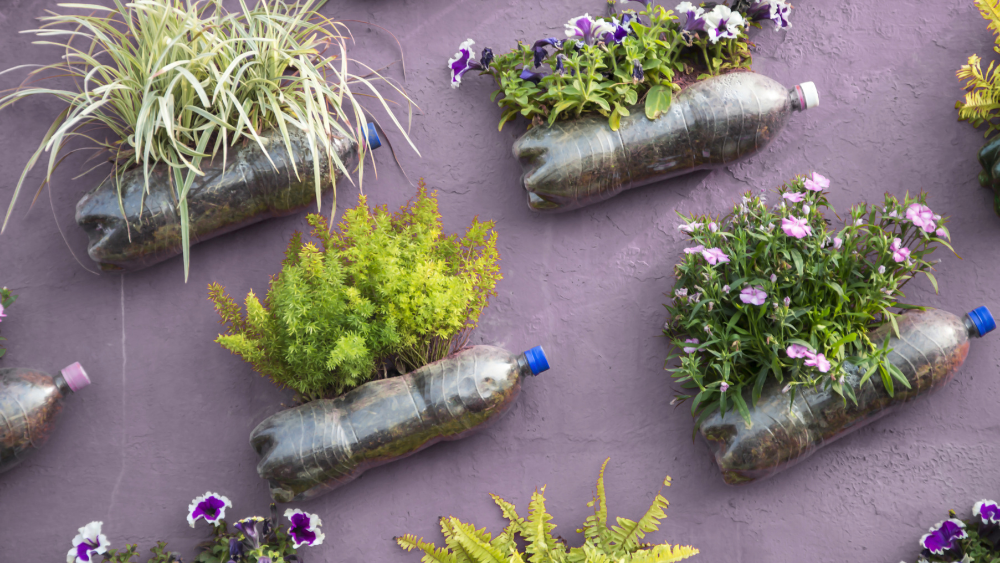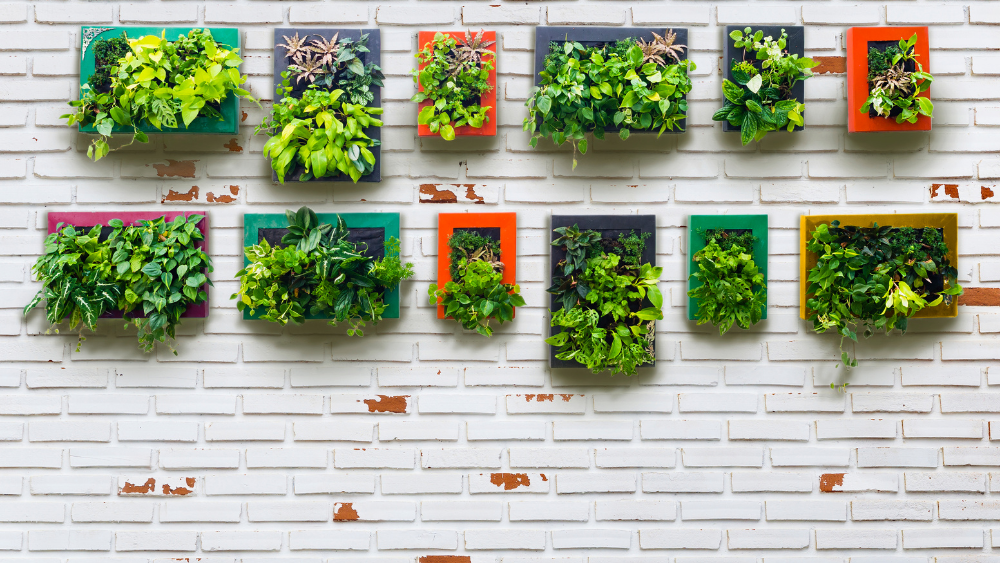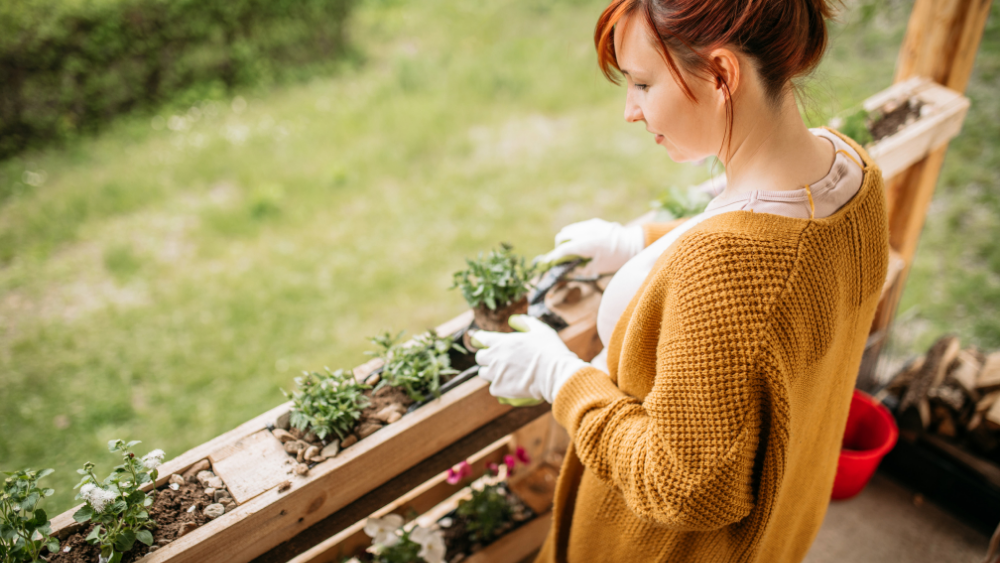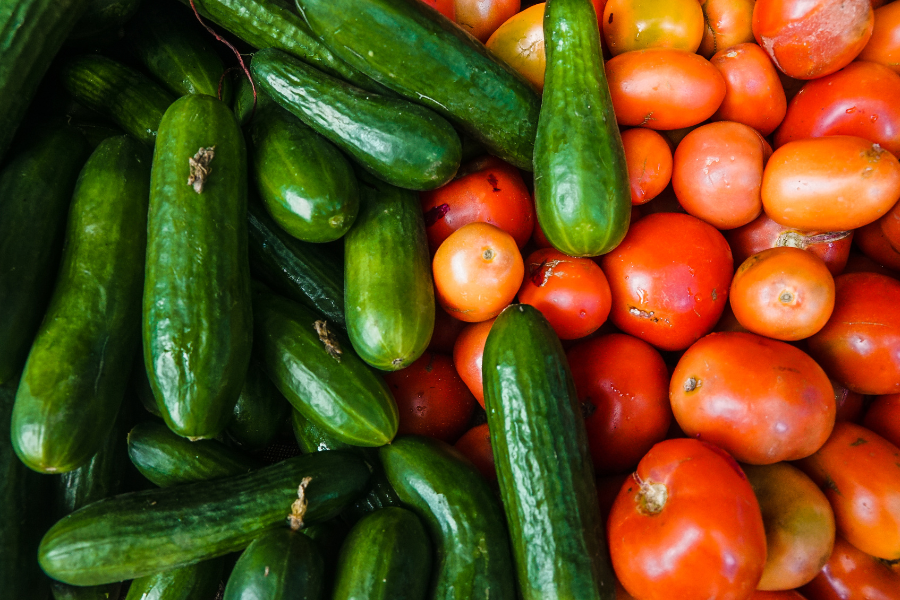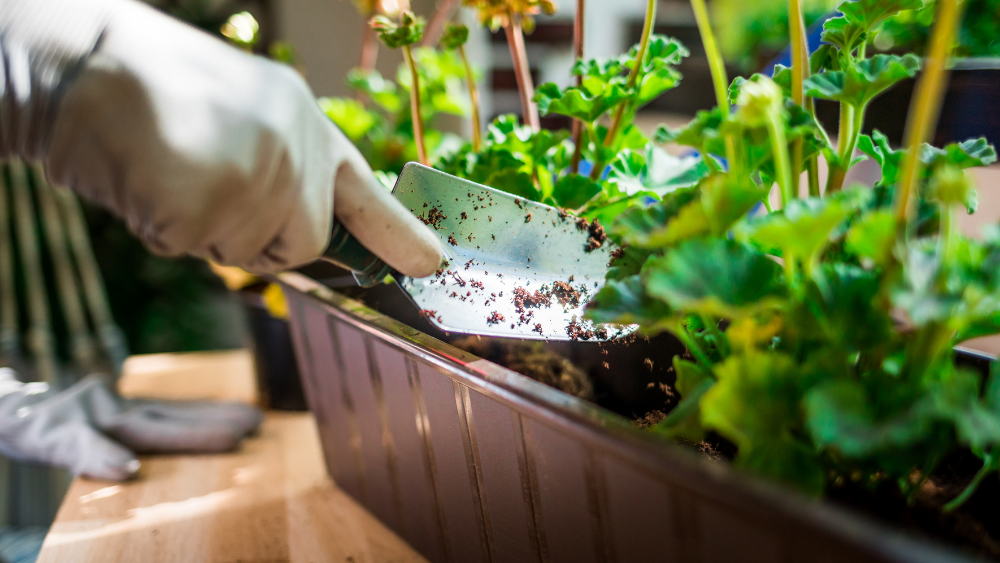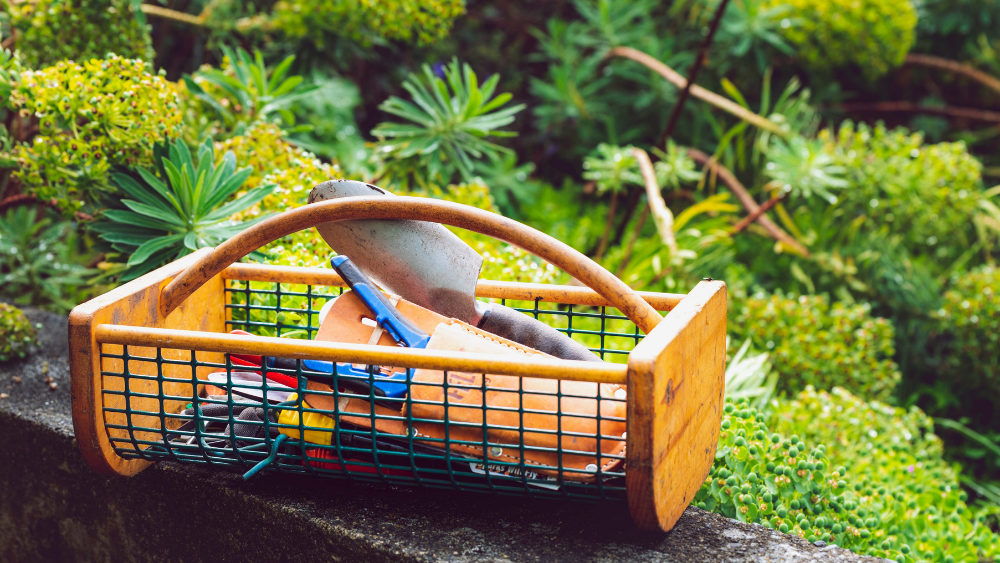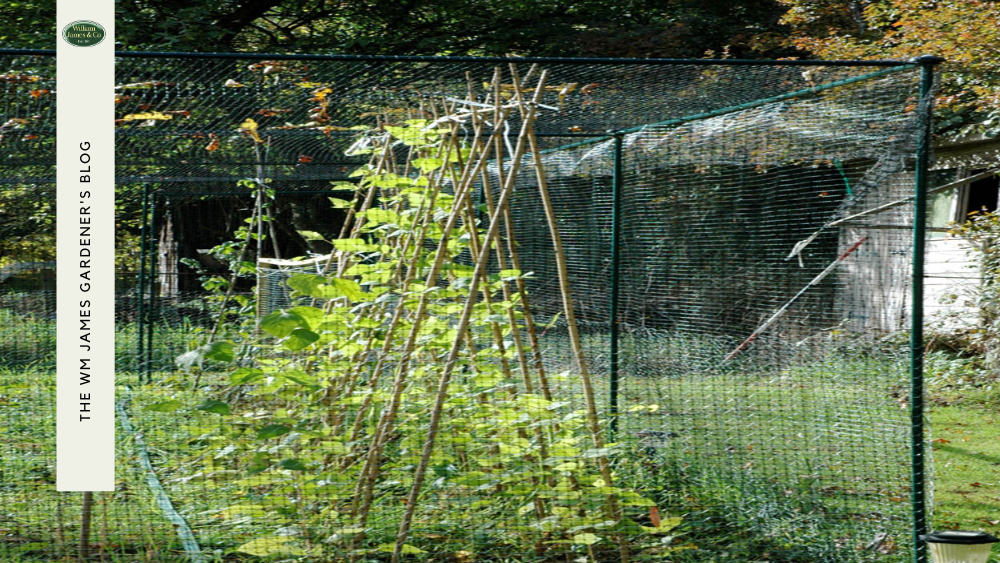We use cookies to make your experience better. To comply with the new e-Privacy directive, we need to ask for your consent to set the cookies. Learn more.
Vertical Vegetable Garden Ideas to Maximise Space
- Admin
- WM James Gardening Blog
- 29 Oct 2021
-
146views
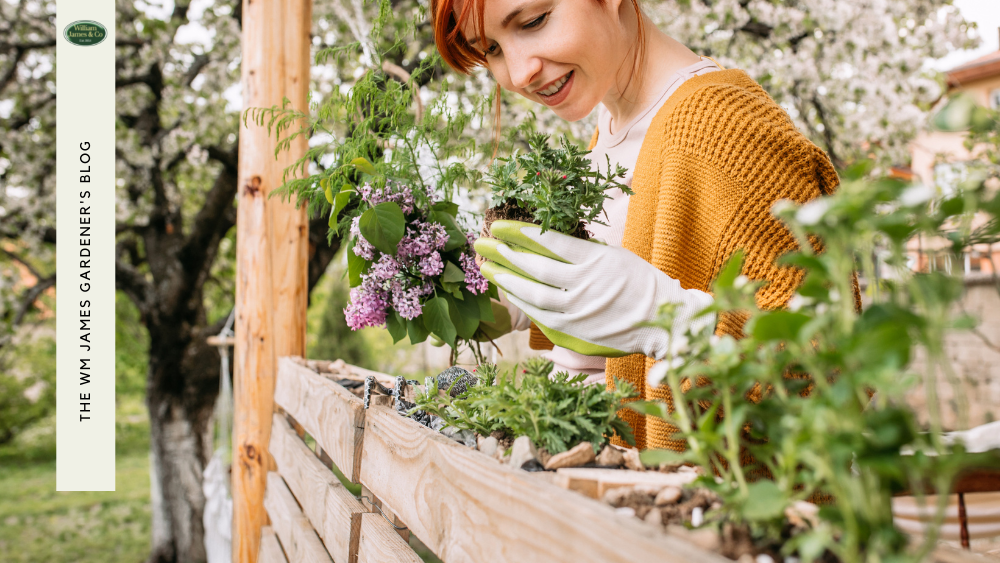
A vertical vegetable garden is a fantastic way to make the most out of limited garden space.
Whether you have a small garden, balcony, or even just a windowsill, vertical gardening allows you to grow your own fresh and nutritious produce without taking up much room – and you don’t have to be an experienced green thumb to do it!
Not only does vertical gardening save space, but it also has numerous other benefits, like helping reduce pest and disease issues, as well as providing more efficient watering and harvesting.
Plus, it's a great opportunity to get creative and add some unique greenery to your outdoor living space.
No matter if you're making the most of your growing space in an allotment or trying a spot of balcony gardening, you can turn a bland wall into a sea of vibrant greenery or a flash of colour with flowers, vegetables, and fruit.
Don’t know where to start? We’ve got just the tips and tricks you need to get started on your own vertical vegetable garden journey.
5 Vertical Vegetable Garden Planter Ideas
There are many options when it comes to planter ideas, including creating makeshift planters or purchasing new ones specifically designed for vertical gardening.
In fact, sustainability is a big part of this trend, with many people getting into it to live a more sustainable lifestyle. You can make your structures out of metal or wood, although you must ensure they’re weatherproof and don't rot or rust over time.
To get your inspiration flowing, we’ve rounded up 5 vegetable garden planter ideas for you to incorporate into your own green space…
1. Stair Step Vegetable Garden
Do you have an old ladder lying around in the shed that you never use? You can repurpose it and give it a new lease of life by transforming it into a quirky plant stand.
It is exceptionally easy to set up; all you have to do is lean the ladder against a wall or fence and set up your plants. It's one of our favourite DIY garden projects!
You can either use potted plants and place one on each rung or use the rungs as a shelf for a hanging basket. If your ladder rungs aren't wide enough for your pots to sit comfortably on, you might want to consider looking for a ladder with wider rungs.
Alternatively, you could use a double-sided ladder and create your own shelves by affixing planks to either rung.
2. Pallet Planter
Wooden pallets and crates provide one of the easiest and most effective bases for your vertical vegetable planter. You can usually find them cheaply or for free from local businesses or places like Gumtree.
A pallet garden doesn't require much construction.
Most of the time, you can simply lean the pallets against a wall or fence panel, which makes them a good option for renters who might not want to drill holes in the walls.
You can fill your pallet with plants or use hanging baskets suspended from the planks.
3. Rain Gutter Garden
Another popular choice is a rain gutter garden. All you need is a rain gutter and plants. You can repurpose any old rain guttering you may have or buy some from a garden centre.
Cut the guttering to your desired length and drill a few drainage holes. After that, it’s simply a case of hanging the gutters and then adding the plants.
Rain gutters are often not that deep, so you will need to find plants that are compatible – they're great for growing herbs!
4. Vertical Bottle Garden
Vertical bottle gardens are very eco-friendly and a great way to recycle plastic bottles. They can be any size, from small 500ml bottles to bigger 2L bottles.
To make a bottle into a planter, all you need to do is lie it down and drill a hole in the bottom; a length of twine or rope is fed through and used to hang the bottle up.
Then, cut out a hole on the side big enough to fit the plants in. Drainage holes are recommended, too.
All that's left after that is to plant your crops and hang them up. Make sure they’re hung sturdily on solid posts or fencing. This is a great way to truly recycle your used plastic!
5. Hanging Grid Garden
A hanging grid garden is perhaps the most involved you’ll be in the setup of all the methods listed above. However, you should be able to find a wire grid of some sort fairly easily.
You can then use a few different methods when constructing your grid.
Firstly, you can use a rope to tie your pots to the grid, although they can get heavy, so make sure they are secure.
An alternative is to cut out prongs from the grid and use them to hold the pots steady.
A grid can be a space-saving solution, which is excellent if you are tight on garden space. You just have to decide the size that works best for you. Grids are usually bigger than pallet planters or mounted bottle gardens, so bear this in mind when placing them.
How to Start Planning a Vertical Vegetable Garden
The great news is that almost all vegetables can be grown vertically as long as the right precautions are taken.
|
When growing plants vertically, there are three primary considerations:
|
Choosing the Best Site for a Vertical Vegetable Garden
Most vegetables need at least six hours of sunlight a day to grow properly. Ideally, find a sunny spot for your vertical garden. If that's not possible, some veggies can manage with less light, but this will limit your options.
8 Best Vegetables to Grow in October
A south-facing location is your best bet, but use your judgement when choosing the placement.
Besides sunlight, consider growing space. Many plants will need plant support systems to grow properly. Plan this early because the space you need will depend on the support structure, such as netting or trellis.
When choosing a structure, ensure it's strong enough to support your plants, as many can get heavy when mature. Have a plant netting support system in place before planting to avoid damaging the plants.
Position the supports behind the plants so they don't block the sun. If possible, stake them into the ground or attach them to a wall if you live in a flat.
Best Vegetables to Grow in Vertical Gardens
For novices, the best place to begin with vertical vegetable gardening is to find plants that climb naturally or can be made to do so with a little bit of encouragement. Tomatoes, peas, and cucumbers can all be made to or already naturally climb.
|
Our top 5 recommendations if you're thinking of growing crops in a small space are:
|
If you have room for deeper shelves in your outdoor space, this will open up your options a little more. You can find gardening inspiration on places like Pinterest, or take a look at our post on vegetable garden ideas for a more guided approach.
Useful Equipment for Vertical Vegetable Gardens
Realistically, the equipment you need to start your vertical garden will depend entirely on what plants you choose to grow and how you choose to grow them. However, a few things are universally useful if you want to grow vegetables and herbs.
First, you need a good, strong vegetable container to grow your crop in.
This could be anything from empty plastic soda bottles if you want to recycle your waste to premade patio planters, like our three-tier Marberry corner cascade planter, or vegetable growing containers, like the Vigoroot Balcony Garden.
The second thing you will need is some form of watering system, whether that be a watering can or self-watering pots. A drip-watering system can be used if you're thinking of going for a gutter garden type style, but as can capillary matting, which helps with even watering.
Explore our watering tools & accessories to maintain your vertical garden
Apart from those things, you might want to invest in a couple of pruning and harvesting basics, like a trowel and secateurs, and things like potting soil, fertiliser, and plant food, all of which are necessary for most plants to grow.
The Top 3 Pieces of Equipment for a DIY Vertical Vegetable Garden:
| Trellis | A trellis provides essential support for climbing plants, acting as a sturdy framework. This practical tool combines functionality with aesthetic appeal, and smaller trellises can complement window boxes, perfect for cultivating a small herb garden or salad greens. |
| Shelves | Shelves are a practical solution if you're short on space. You can build them using materials you already have, but ensure they're deep enough to serve effectively as containers. |
| Hanging Pots | Hanging pots and baskets are ideal for setting up a vertical vegetable garden. You can place them almost anywhere if you have a spot to hang them. For instance, on a balcony, you can hang them on the railings or attach hooks to the walls for them. Vegetables such as lettuce and herbs thrive in hanging planters. |
Maintenance Tips for Vertical Vegetable Gardens
To ensure that you are meeting your garden's maintenance needs, you will need to clear away debris regularly. If this builds up, it might start to cover some of your smaller plants and vegetables. If this happens regularly, think about moving them into individual pots.
Next, check for any harmful insects that might be eating away at the leaves. Remember to check underneath too! Don't be afraid to use vegetable netting to protect your crops.
Make sure you regularly water all of your plants according to their watering schedule, and remember to harvest the plants when they are ripe; otherwise, they will rot in the container.
If you plan, then your maintenance tasks won't take that long because you can spread them out over the week.
Initially, developing your schedule can be time-consuming, but once you have got the hang of it, the process speeds up, and you'll have more time to enjoy what you've sown.
Final Thoughts: Our Top Vertical Gardening Ideas
If you've got a green thumb and want to try your hand at growing some vegetables but don't have much space to work with, we highly recommend creating a vertical veg garden. It can really help you make the most of the space you do have.
There are so many different vertical garden ideas that vary in creativity and ease of implementation. Hopefully, some of these vertical vegetable garden tips will inspire you to create your own.
Our Gardener's Diary offers more tips and advice on planting and maintaining gardens so that plants and crops can thrive all year round.
Read expert tips and gardening advice on our Gardener's Diary blog
FAQs
Can You Grow Other Plants in a Vertical Garden?
Yes, you can grow a variety of plants in a vertical garden, including herbs, flowers, and small fruits. Choose plants that suit your climate and available light. Ensure you have the right support and watering systems in place for optimal growth.
Can You Grow Carrots in a Vertical Garden?
Yes, you can grow carrots in a vertical garden using deep containers or pockets. Ensure the soil is loose and well-draining, and choose smaller carrot varieties if space is limited. Proper spacing and regular watering are essential for healthy growth.
What are the Basics of Vertical Gardening?
Vertical gardening involves growing plants upwards using trellises, shelves, or hanging pots. To succeed, choose the right plants, ensure they get enough sunlight, use appropriate containers, and keep a regular watering and maintenance schedule. This helps your plants thrive even in limited space.
How Do You Organise a Vertical Garden?
Organise a vertical garden by choosing a sunny location, selecting appropriate climbing or container-friendly plants, planning out support structures like trellises or shelves, and setting up an efficient watering system to ensure consistent moisture for your plants.



